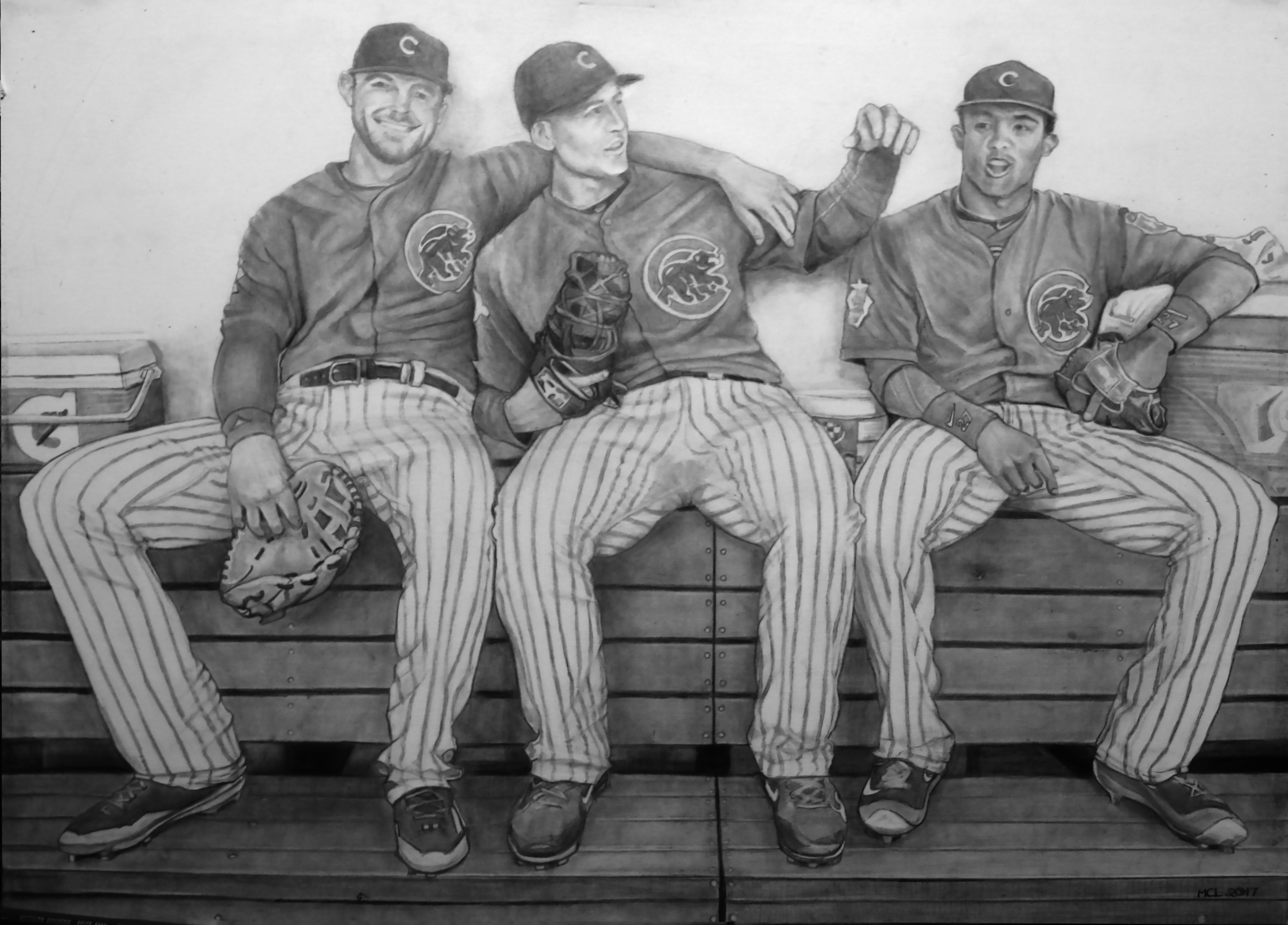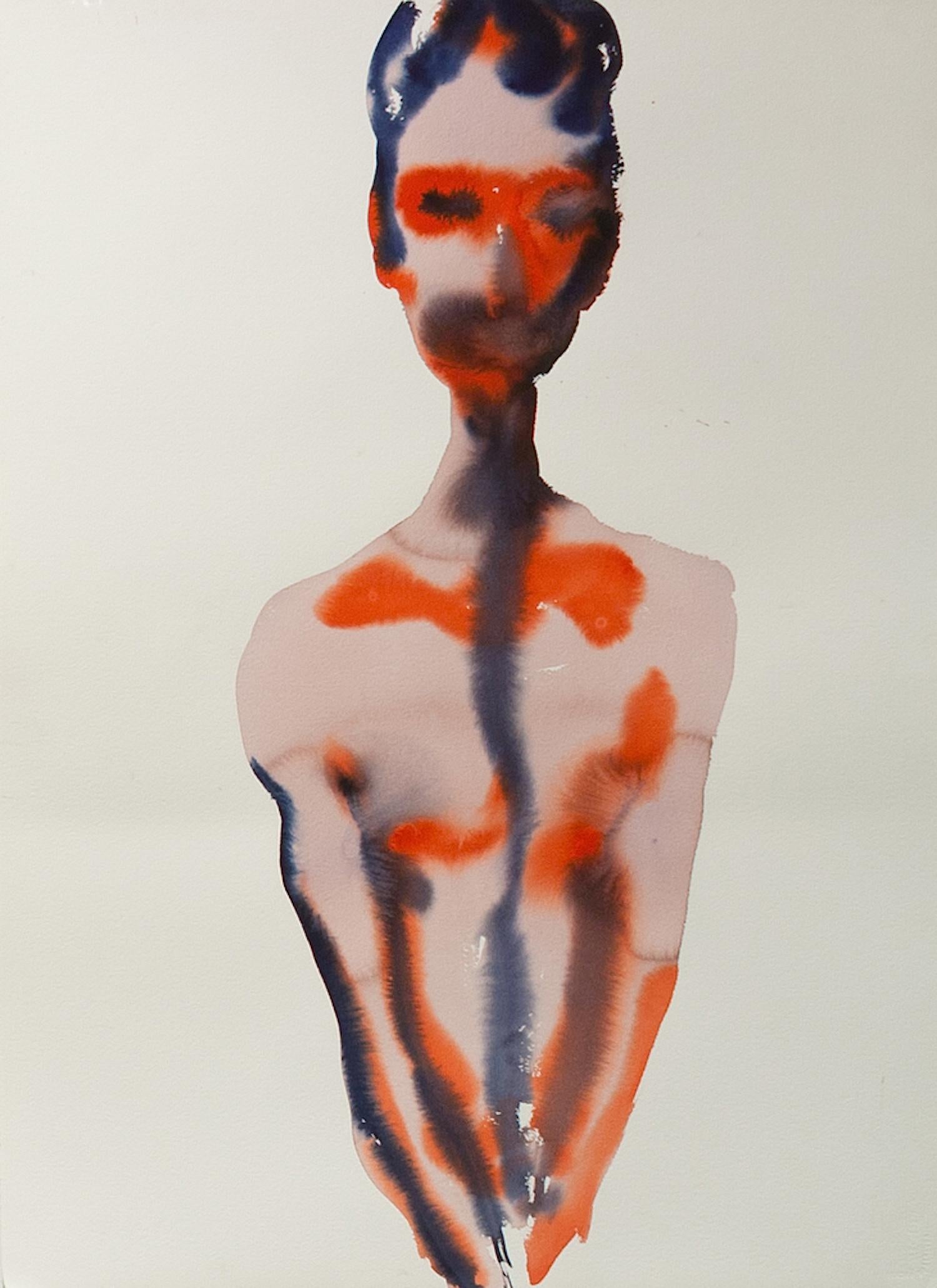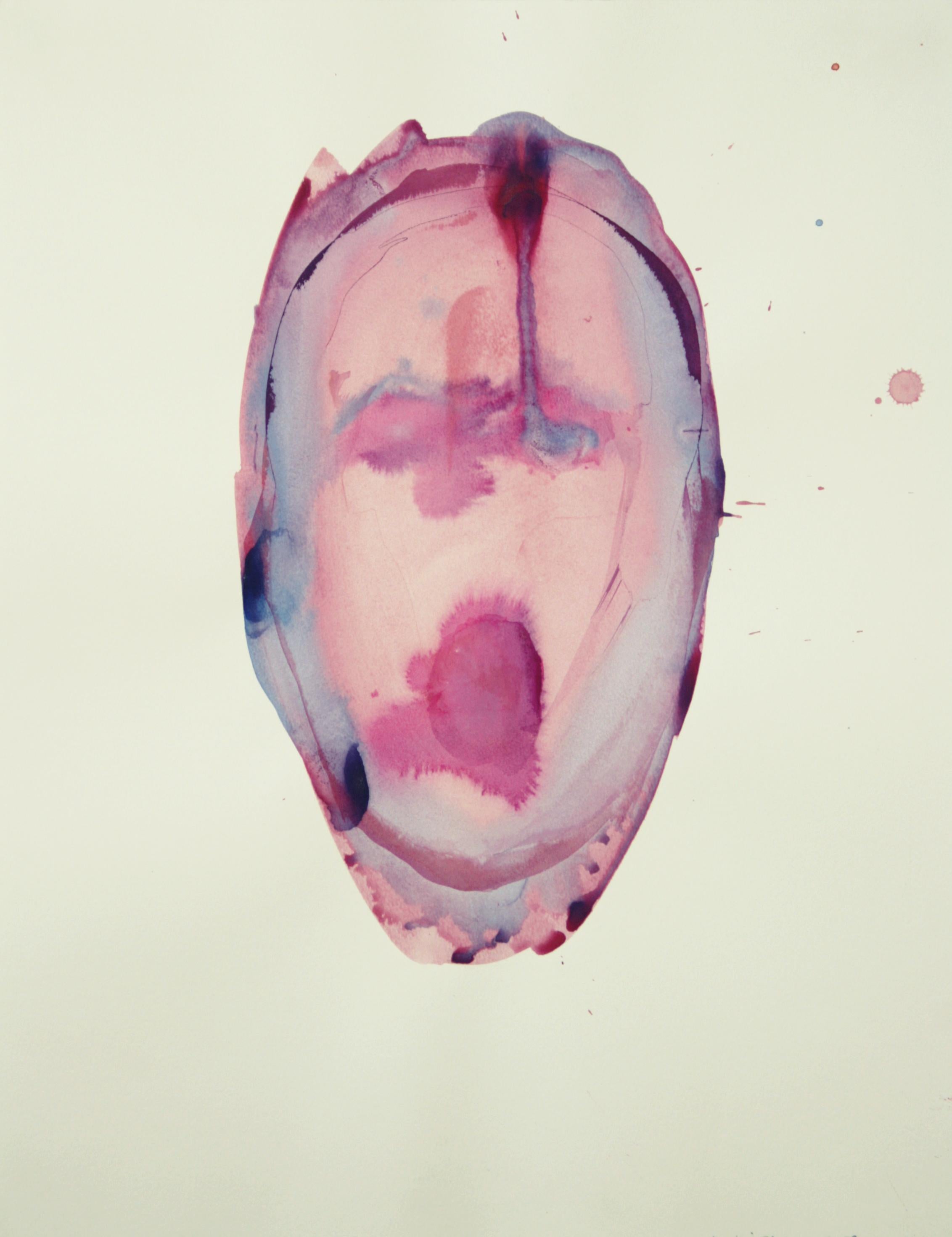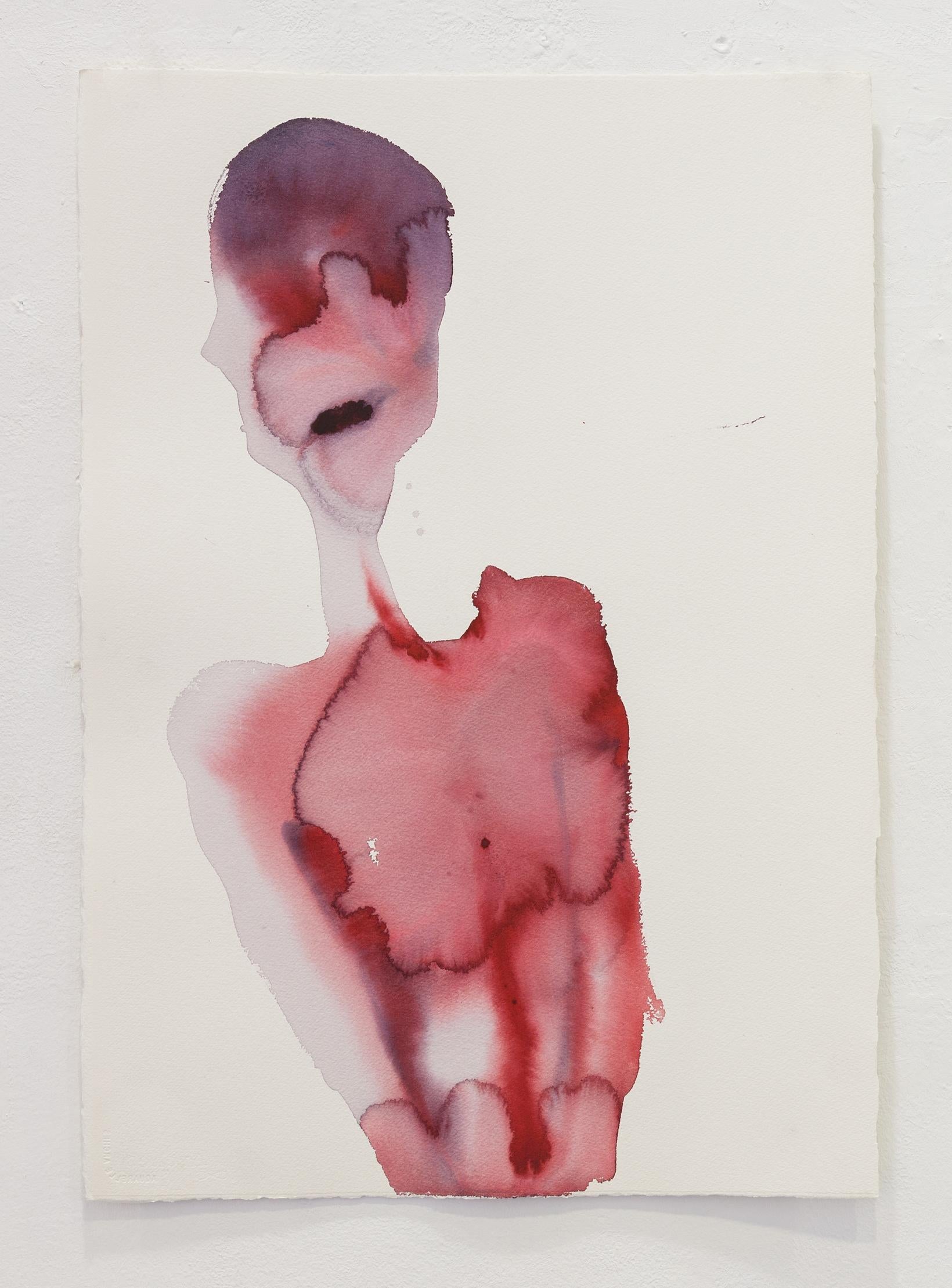Items Similar to Hank Aaron, Ted Williams, Stan Musial, Willie Mays, Baseball All-Stars Painting
Want more images or videos?
Request additional images or videos from the seller
1 of 13
Margie LawrenceHank Aaron, Ted Williams, Stan Musial, Willie Mays, Baseball All-Stars Painting2013
2013
About the Item
Hank Aaron, nicknamed "Hammer" or "Hammerin' Hank", was an American professional baseball right fielder who played 23 seasons in Major League Baseball, from 1954 through 1976, primarily with the Braves Organization. Hall of Fame Induction 1982
Ted Williams was an American professional baseball player and manager. He played his entire 19-year Major League Baseball career, primarily as a left fielder for the Boston Red Sox from 1939 to 1960; his career was interrupted by military service during World War II and the Korean War. Induction into The Hall of Fame 1972
Stanley Frank Musial, nicknamed Stan the Man, was an American baseball outfielder and first baseman. He spent 22 seasons in Major League Baseball, playing for the St. Louis Cardinals, from 1941 to 1944 and from 1946 to 1963. Hall of Fame Induction 1969
Willie Howard Mays Jr., nicknamed "The Say Hey Kid", is an American former professional baseball center fielder. He spent almost all of his 22-season Major League Baseball career playing for the New York/San Francisco Giants before finishing his career with the New York Mets Hall of Fame Induction 1979
Margie Lawrence
Hank Aaron, Ted Williams, Stan Musial, Willie Mays
watercolor and graphite on paper
22.50h x 28w in
57.15h x 71.12w cm
MAL024
Margie Lawrence
b. 1957, Chicago
Education
School of the Art Institute of Chicago – Illustration, Printmaking, Chicago, IL
University of Wisconsin-Madison – Theatre, Madison, WI
Drake University, BFA – Theatre, Des Moines, IA
National Theatre Institute, Waterford CT
Royal Shakespeare Company, Stratford, England
Exhibitions
2018 Baseball Art, Second Story Studios, Chicago, IL
Baseball as Art, Cleveland County Arts Council, Shelby, NC
Masterful Moxie – The Power of Art, Dank Haus, Chicago, IL
Connections – Exploring the Ties that Bind, Open Walls, Chicago, IL
Wrap It Up, Gallery Victor Armendariz, Chicago, IL
2017 Group Show, Bergino Baseball Clubhouse, New York, NY
Baseball as Art, Cleveland Count Arts Council, Shelby, NC
2015 Group Show, Bergino Baseball Clubhouse, New York, NY
Baseball as Art, Cleveland Count Arts Council, Shelby, NC
2014 All Stars of Baseball Art, The Mason Civic League Gallery, Hoboken, NJ
Pine Tar Portraits & Other Notables, Firecat Projects, Chicago, IL
2013 Baseball Art Show, George Krevsky Gallery, San Francisco, CA
2012 Group Show, Bergino Baseball Clubhouse, New York, NY
Baseball Art Show, George Krevsky Gallery, San Francisco, CA
Solo Show, Ten Cat, Chicago, IL
2011 Baseball Art Show, George Krevsky Gallery, San Francisco, CA
2000 Erotica Show, Jettsett Gallery/Ed Paschke, Chicago, IL
Summer Show, Jettsett Gallery/Ed Paschke, Chicago, IL
Solo Show, Ten Cat, Chicago, IL
1999 Baseball Art Show, Excalibur, Chicago, IL
Museum Collections
National Pastime Museum, San Francisco, CA
Negro League Museum, Kansas City, MO
Selected Publications
From the Heartland, WLUW Radio Interview
Rick Kogan, WGN Radio Interview
Longtime Cubs Fan Turns Passion to Artwork, Tony Briscoe
Maltz Museum of Jewish Heritage interview “For the Love of the Game”, Sam Fryberger
Jay Shefsky, WTTW Interview
Someone You Should Know: Margie Lawrence, Harry Porterfield
Turning the Other Cheek Margie Lawrence, Donald G Evans, Can’t Miss Press
MLB Blog
- Creator:Margie Lawrence (1957)
- Creation Year:2013
- Dimensions:Height: 20.5 in (52.07 cm)Width: 28 in (71.12 cm)
- Medium:
- Movement & Style:
- Period:
- Condition:
- Gallery Location:Chicago, IL
- Reference Number:
About the Seller
5.0
Platinum Seller
These expertly vetted sellers are 1stDibs' most experienced sellers and are rated highest by our customers.
Established in 2017
1stDibs seller since 2017
318 sales on 1stDibs
Typical response time: 1 hour
- ShippingRetrieving quote...Ships From: Chicago, IL
- Return PolicyA return for this item may be initiated within 7 days of delivery.
More From This SellerView All
- World Series Bench - Chicago Cubs, Bryant, Rizzo & Russell, Graphite on PaperBy Margie LawrenceLocated in Chicago, ILThe "World Series Bench" by Margie Lawrence consists of three key players in the Chicago Cubs for the long awaited World Series win in 2016. From the ...Category
2010s Contemporary Portrait Drawings and Watercolors
MaterialsPaper, Graphite
- Jimmy Archer - Baseball Great for the 1908 Chicago Cubs In A Catchers MaskBy Margie LawrenceLocated in Chicago, ILJimmy Archer was an Irish-born catcher in Major League Baseball who spent nearly his entire career with four National League teams, primarily the Chicago Cubs...Category
Early 2000s Contemporary Portrait Drawings and Watercolors
MaterialsPaper, Graphite
- Yogi and Ted - Baseball Greats Yogi Berra and Ted Williams, Watercolor on PaperBy Margie LawrenceLocated in Chicago, ILLawrence Peter "Yogi" Berra was an American professional baseball catcher who later took on the roles of manager and coach. He played 19 seasons in Ma...Category
2010s Contemporary Portrait Drawings and Watercolors
MaterialsPaper, Watercolor
- Pete Alexander, HW Bush & Cool Papa Bell - Baseball Greats w/ a Former PresidentBy Margie LawrenceLocated in Chicago, ILGrover Cleveland Alexander, nicknamed "Old Pete", was an American Major League Baseball pitcher. He played from 1911 through 1930 for the Philadelphia Phillies, Chicago Cubs...Category
2010s Contemporary Portrait Drawings and Watercolors
MaterialsPaper, Watercolor
- Ernie Banks at Ebetts Field - Chicago Cubs Baseball Great, Watercolor FramedBy Margie LawrenceLocated in Chicago, ILErnie Banks, aka "Mr. Cub" and "Mr. Sunshine", was a professional baseball player who starred in Major League Baseball as a shortstop and first baseman for...Category
2010s Contemporary Portrait Drawings and Watercolors
MaterialsPaper, Watercolor
- Ron Santo and Ernie Banks - Original Painting of "Mr. Cub" and "Mr. Sunshine"By Margie LawrenceLocated in Chicago, ILRon Santo was an American Major League Baseball third baseman who played for the Chicago Cubs from 1960 through 1973 and the Chicago White Sox in 1974 Hall of fame induction: 2012 Ernest Banks, nicknamed "Mr. Cub" and "Mr. Sunshine", was an American professional baseball player who starred in Major League Baseball as a shortstop and first baseman for the Chicago Cubs between 1953 and 1971 Hall of fame induction: 1977 This artwork is framed in a simple black frame measuring 24.5 x 28 inches. Margie Lawrence Ron Santo and Ernie Banks...Category
2010s Contemporary Portrait Drawings and Watercolors
MaterialsPaper, Watercolor, Acrylic
You May Also Like
- Self Portrait 02 - Modern Figurative Watercolor Painting, New ExpressionismBy Maciej OlekszyLocated in Salzburg, ATThe artwork on paper will be sent unframed to you. Maciej Olekszy was born in 1982, Poland. Graduated from the Academy of Fine Arts in Poznan, Poland in 2007. Faculty of Painting i...Category
2010s Contemporary Figurative Paintings
MaterialsPaper, Watercolor
- Untitled 02 - Contemporary Figurative Watercolor Painting, New ExpressionismBy Maciej OlekszyLocated in Salzburg, ATThe artwork on paper will be sent unframed to you. Untitled 02, From the Series "Iron Stove" Maciej Olekszy was born in 1982, Poland. Graduated from the Academy of Fine Arts in Poz...Category
2010s Contemporary Figurative Paintings
MaterialsPaper, Watercolor
- Untitled 03 - Contemporary Figurative Watercolor Painting, New ExpressionismBy Maciej OlekszyLocated in Salzburg, ATThe artwork on paper will be sent unframed to you. Untitled 03, From the Series "Iron Stove" Maciej Olekszy was born in 1982, Poland. Graduated from the Academy of Fine Arts in Poz...Category
Early 2000s Contemporary Figurative Paintings
MaterialsPaper, Watercolor
- Self Portrait - Contemporary Figurative Watercolor Painting, New ExpressionismBy Maciej OlekszyLocated in Salzburg, ATThe artwork on paper will be sent unframed to you. Maciej Olekszy was born in 1982, Poland. Graduated from the Academy of Fine Arts in Poznan, Poland in 2007. Faculty of Painting i...Category
2010s Contemporary Figurative Paintings
MaterialsPaper, Watercolor
- Eyes WideBy Darius StewardLocated in Fairlawn, OHSigned with the artist's initials lower right Darius Steward is establishing himself as a master of the medium of watercolor and large public murals. In 2018, Steward created two l...Category
2010s Contemporary Portrait Drawings and Watercolors
MaterialsWatercolor
- Rare Modernist Hungarian Rabbi Pastel Drawing Gouache Painting Judaica Art DecoBy Hugó ScheiberLocated in Surfside, FLRabbi in the synagogue at prayer wearing tallit and tefillin. Hugó Scheiber (born 29 September 1873 in Budapest – died there 7 March 1950) was a Hungarian modernist painter. Hugo Scheiber was brought from Budapest to Vienna at the age of eight where his father worked as a sign painter for the Prater Theater. At fifteen, he returned with his family to Budapest and began working during the day to help support them and attending painting classes at the School of Design in the evening, where Henrik Papp was one of his teachers. He completed his studies in 1900. His work was at first in a post-Impressionistic style but from 1910 onward showed his increasing interest in German Expressionism and Futurism. This made it of little interest to the conservative Hungarian art establishment. However, in 1915 he met the great Italian avant-gardist Filippo Tommaso Marinetti and the two painters became close friends. Marinetti invited him to join the Futurist Movement. The uniquely modernist style that he developed was, however, closer to German Expressionism than to Futurism and eventually drifted toward an international art deco manner similar to Erté's. In 1919, he and his friend Béla Kádar held an exhibition at the Hevesy Salon in Vienna. It was a great success and at last caused the Budapest Art Museum to acquire some of Scheiber's drawings. Encouraged, Scheiber came back to live in Vienna in 1920. A turning point in Scheiber's career came a year later, when Herwarth Walden, founder of Germany's leading avant-garde periodical, Der Sturm, and of the Sturm Gallery in Berlin, became interested in Scheiber's work. Scheiber moved to Berlin in 1922, and his paintings soon appeared regularly in Walden's magazine and elsewhere. Exhibitions of his work followed in London, Rome, La Paz, and New York. Scheiber's move to Germany coincided with a significant exodus of Hungarian artists to Berlin, including Laszlo Moholy-Nagy and Sandor Bortnyik. There had been a major split in ideology among the Hungarian avant-garde. The Constructivist and leader of the Hungarian avantgarde, Lajos Kassák (painted by Hugó Scheiber in 1930) believed that art should relate to all the needs of contemporary humankind. Thus he refused to compromise the purity of his style to reflect the demands of either the ruling class or socialists and communists. The other camp believed that an artist should be a figurehead for social and political change. The fall out and factions that resulted from this politicisation resulted in most of the Hungarian avant gardists leaving Vienna for Berlin. Hungarian émigrés made up one of the largest minority groups in the German capital and the influx of their painters had a significant effect on Hungarian and international art. Another turning point of Scheiber's career came in 1926, with the New York exhibition of the Société Anonyme, organized by Katherine Dreier. Scheiber and other important avant garde artists from more than twenty-three countries were represented. In 1933, Scheiber was invited by Marinetti to participate in the great meeting of the Futurists held in Rome in late April 1933, Mostra Nazionale d’Arte Futurista where he was received with great enthusiasm. Gradually, the Hungarian artists began to return home, particularly with the rise of Nazism in Germany. Kádar went back from Berlin in about 1932 and Scheiber followed in 1934. He was then at the peak of his powers and had a special flair in depicting café and cabaret life in vivid colors, sturdily abstracted forms and spontaneous brush strokes. Scheiber depicted cosmopolitan modern life using stylized shapes and expressive colors. His preferred subjects were cabaret and street scenes, jazz musicians, flappers, and a series of self-portraits (usually with a cigar). his principal media being gouache and oil. He was a member of the prestigious New Society of Artists (KUT—Képzőművészek Új Társasága)and seems to have weathered Hungary's post–World War II transition to state-communism without difficulty. He continued to be well regarded, eventually even receiving the posthumous honor of having one of his images used for a Russian Soviet postage stamp (see image above). Hugó Scheiber died in Budapest in 1950. Paintings by Hugó Scheiber form part of permanent museum collections in Budapest (Hungarian National Museum), Pecs (Jannus Pannonius Museum), Vienna, New York, Bern and elsewhere. His work has also been shown in many important exhibitions, including: "The Nell Walden Collection," Kunsthaus Zürich (1945) "Collection of the Société Anonyme," Yale University Art Gallery, New Haven, Connecticut (1950) "Hugó Scheiber: A Commemorative Exhibition," Hungarian National Museum, Budapest (1964) "Ungarische Avantgarde," Galleria del Levante, Munich (1971) "Paris-Berlin 1900-1930," Centre Georges Pompidou, Paris (1978) "L’Art en Hongrie, 1905-1920," Musée d’Art et l’Industrie, Saint-Etienne (1980) "Ungarische Avantgarde in der Weimarer Republik," Marburg (1986) "Modernizmus," Eresz & Maklary Gallery, Budapest (2006) "Hugó Scheiber & Béla Kádár," Galerie le Minotaure, Paris and Tel Aviv (2007) Hugó Scheiber's paintings continue to be regularly sold at Sotheby's, Christie's, Gillen's Arts (London), Papillon Gallery (Los Angeles) and other auction houses. He was included in the exhibition The Art Of Modern Hungary 1931 and other exhibitions along with Vilmos Novak Aba, Count Julius Batthyany, Pal Bor, Bela Buky, Denes Csanky, Istvan Csok, Bela Czobel, Peter Di Gabor, Bela Ivanyi Grunwald, Baron Ferenc Hatvany, Lipot Herman, Odon Marffy, C. Pal Molnar...Category
Early 20th Century Modern Figurative Paintings
MaterialsPaper, Charcoal, Pastel, Watercolor, Gouache





